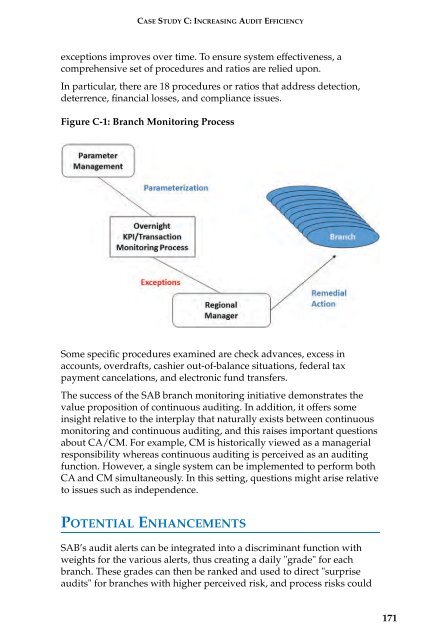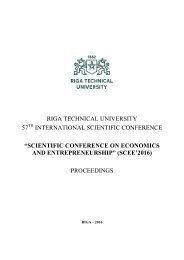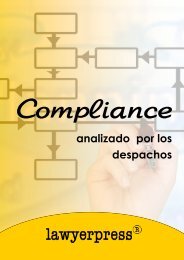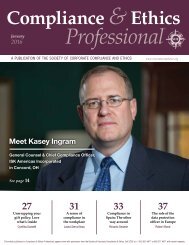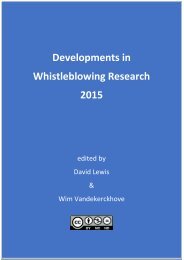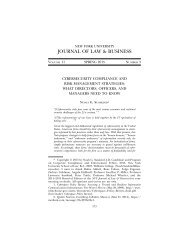AUDIT ANALYTICS AUDIT
x8YaD9
x8YaD9
- No tags were found...
You also want an ePaper? Increase the reach of your titles
YUMPU automatically turns print PDFs into web optimized ePapers that Google loves.
CASE STUDY C: INCREASING <strong>AUDIT</strong> EFFICIENCY<br />
exceptions improves over time. To ensure system effectiveness, a<br />
comprehensive set of procedures and ratios are relied upon.<br />
In particular, there are 18 procedures or ratios that address detection,<br />
deterrence, financial losses, and compliance issues.<br />
Figure C-1: Branch Monitoring Process<br />
Some specific procedures examined are check advances, excess in<br />
accounts, overdrafts, cashier out-of-balance situations, federal tax<br />
payment cancelations, and electronic fund transfers.<br />
The success of the SAB branch monitoring initiative demonstrates the<br />
value proposition of continuous auditing. In addition, it offers some<br />
insight relative to the interplay that naturally exists between continuous<br />
monitoring and continuous auditing, and this raises important questions<br />
about CA/CM. For example, CM is historically viewed as a managerial<br />
responsibility whereas continuous auditing is perceived as an auditing<br />
function. However, a single system can be implemented to perform both<br />
CA and CM simultaneously. In this setting, questions might arise relative<br />
to issues such as independence.<br />
POTENTIAL ENHANCEMENTS<br />
SAB’s audit alerts can be integrated into a discriminant function with<br />
weights for the various alerts, thus creating a daily "grade" for each<br />
branch. These grades can then be ranked and used to direct "surprise<br />
audits" for branches with higher perceived risk, and process risks could<br />
171


